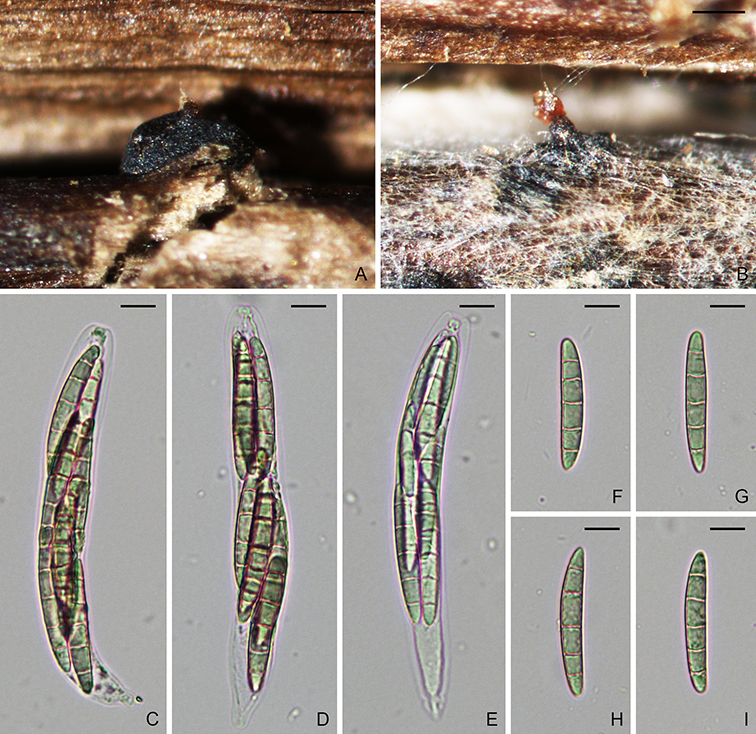
Figure. Pseudohalonectria adversaria (NYBG01050482). A–B. Ascomata. C–E. Asci. F–I. Ascospores. Scale bars: A–B = 200 µm; C–I = 10 µm.
Pseudohalonectria adversaria Shearer, Can. J. Bot. 67(7): 1945 (1989).
MycoBank: MB136210.
Morphological description: Ascomata perithecial, superficial to submerged, solitary to gregarious, brown to orange brown, globose to subglobose, 450–650 µm in diam, with an orange brown, cylindrical, neck, 85–250 × 100–150 µm. Paraphyses hyaline, septate. Asci unitunicate, clavate, 8-spored, 110–145 × 13–18 µm, with a refractive ring. Ascospores 3–4-seriate in the ascus, not or slightly curved, hyaline, yellowish to orange, ellipsoid, 5–6-septate, not constricted at the septum, smooth, 35–47 × 4.5–7 µm.
Specimens examined: USA, Illinois, Johnson County, Deer Pond, Elvira Cypress Swamp, from submerged woody debris, 08 Aug. 1977, C.A. Shearer, CS-603-1 (holotype, NYBG01050482, NYBG03380666; isotype, NYBG01050481; ex-type culture, ATCC56670).
Hosts/substrates: from submerged Machilus sp. and other woody debris.
References:
Shearer CA. 1989. Pseudohalonectria (Lasiosphaeriaceae), an antagonistic genus from wood in freshwater. Canadian Journal of Botany. 67(7):1944–1955.
Geographical distribution: China, Hong Kong. USA, Illinois.
Copyright 2022 by The American Phytopathological Society. Reproduced, by permission, from Luo, J., and Zhang, N. 2022. The Rice Blast Fungus and Allied Species: A Monograph of the Fungal Order Magnaporthales (https://my.apsnet.org/APSStore/Product-Detail.aspx?WebsiteKey=2661527A-8D44-496C-A730-8CFEB6239BE7&iProductCode=46826). American Phytopathological Society, St. Paul, MN.